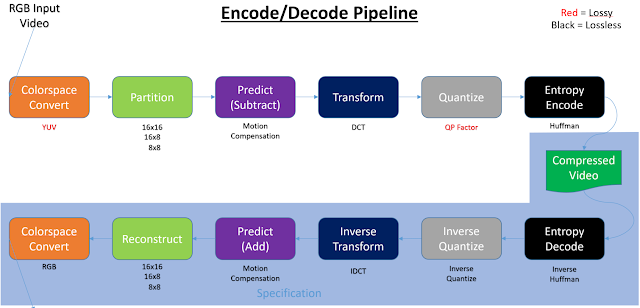VP9 Video Encoding/Decoding Support On A PC

Introduction Video decoding/encoding can take place in the following four types of silicon: 1. General purpose CPU silicon (x86, ARM, SSE, AVX, …) 2. Dedicated CPU silicon (Intel QuickSync, AMD VideoCoreNext) 3. General purpose GPU silicon (cores) (GPGPU, Cuda, OpenCL, Shaders, …) 4. Dedicated GPU silicon (NVidia PureVideo (decode), NVida NVENC (encode)) (Table 1) When video is encoded or decoded any combination of the above silicon can be used. Being this paper is focused on everyday PCs, I’ve left out things like FPGAs, but you could consider an FPGA solution to be more like a general purpose GPU silicon solution. Note, at times this paper uses the term SIP (Semiconductor Intellectual Property core) to denote dedicated encode/decode silicon. Encoding and decoding of video has a defined pipeline: When encoding or decoding video, any one of those colored blocks can be done in hardware or software. Sometimes a full software approach is ...